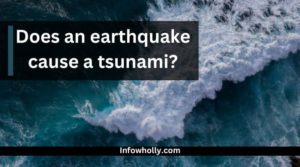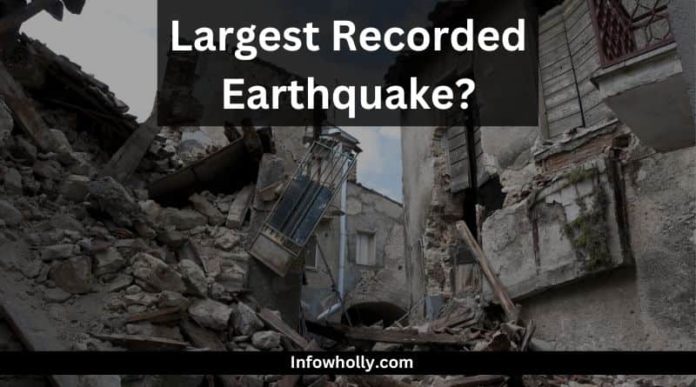The largest earthquake ever recorded struck Chile in 1960, registering a massive 9.5 magnitude on the Richter scale. Known as the Valdivia Earthquake, it caused widespread devastation: over 5,700 fatalities, 2 million people displaced, and thousands of homes destroyed. This earthquake remains the strongest ever documented in human history.
The Largest Earthquake Ever Recorded: Causes, Effects, and Survival Tips
The 1960 Chile earthquake was caused by the subduction of the Nazca Plate beneath the South American Plate. This tectonic movement unleashed an enormous amount of energy, leading to destructive tsunamis that reached as far as Hawaii and Japan.
This event highlights the catastrophic potential of large-scale earthquakes and emphasizes the importance of earthquake preparedness.
Other Historic Earthquakes
Several other notable earthquakes in history include:
- 1964 Alaskan Earthquake: Magnitude 9.2
- 2004 Sumatra Earthquake: Magnitude 9.1
- 2011 Tohoku Earthquake (Japan): Magnitude 9.0
- 1952 Kamchatka Earthquake (Russia): Magnitude 9.0
Each of these events resulted in significant loss of life, property destruction, and economic impacts, demonstrating the need for ongoing seismic research and preparedness.
What Causes Earthquakes?

Earthquakes are primarily caused by the movement of tectonic plates in the Earth’s crust. This movement is driven by convection currents in the Earth’s mantle. Other causes of earthquakes include:
- Volcanic activity, where pressure release causes seismic waves
- Human activities like mining or fracking
Understanding these causes is crucial to mitigating the effects of earthquakes and reducing the risk to life and property.
How Do Earthquakes Cause Tsunamis?

Large underwater earthquakes, such as the 1960 Valdivia Earthquake, can displace vast amounts of water, creating devastating tsunamis. These waves travel across oceans at speeds of up to 800 km/h (500 mph) and can grow significantly larger near coastlines.
When a tsunami reaches land, it can destroy buildings, cause flooding, and disrupt ecosystems. Recognizing warning signs such as sudden ocean retreat or strong earthquakes is essential for quick evacuation.
Earthquake Terminology: Tremors vs. Earthquakes
- Earthquake: A sudden release of energy in the Earth’s crust, causing significant ground shaking. For example, the 1960 Chile earthquake registered 9.5 on the Richter scale.
- Tremor: A smaller seismic event, often caused by surface faults, volcanic activity, or human actions like mining. Tremors are less destructive than major earthquakes.
Earthquake vs. Aftershock
- Earthquake: The initial, major seismic event resulting from energy release in the Earth’s crust.
- Aftershock: Smaller tremors that follow the main earthquake, often in the same region, and gradually decrease in intensity.
Aftershocks can cause additional damage to already weakened structures.
Measuring Earthquakes with the Richter Scale
The Richter scale measures earthquake magnitude on a logarithmic scale. Each whole-number increase represents a tenfold rise in seismic wave amplitude.
For instance, the 1960 Chile earthquake (magnitude 9.5) remains the strongest ever recorded, causing catastrophic damage and triggering tsunamis across the Pacific.
Earthquakes Around the World
Globally, earthquakes of magnitude 4 or greater occur daily, although most are not felt by humans. Major earthquakes, like the 1960 Valdivia Earthquake, can cause secondary disasters such as:
- Tsunamis
- Landslides
- Floods
- Fires
Preparedness is key to mitigating these risks.
Warning Signs of an Impending Earthquake
While earthquakes cannot be predicted precisely, some warning signs include:
- Small tremors: Minor shakes often precede larger earthquakes.
- Animal behavior: Animals may act erratically due to their heightened senses.
- Changes in groundwater levels: Shifts in the water table can signal seismic activity.
- Cracks or fissures: Sudden changes in the landscape, such as cracks in roads or walls.
Recognizing these signs can help save lives.
How to Prepare for an Earthquake
- Secure Your Home: Fasten heavy furniture, secure gas lines, and ensure smoke detectors are functional.
- Prepare an Emergency Kit: Include a first aid kit, water, non-perishable food, flashlights, and batteries.
- Know Evacuation Routes: Identify safe places indoors (e.g., under sturdy furniture) and outdoors.
- Stay Informed: Use radios or mobile alerts for updates during a quake.
Being proactive can greatly reduce the risks associated with earthquakes.

